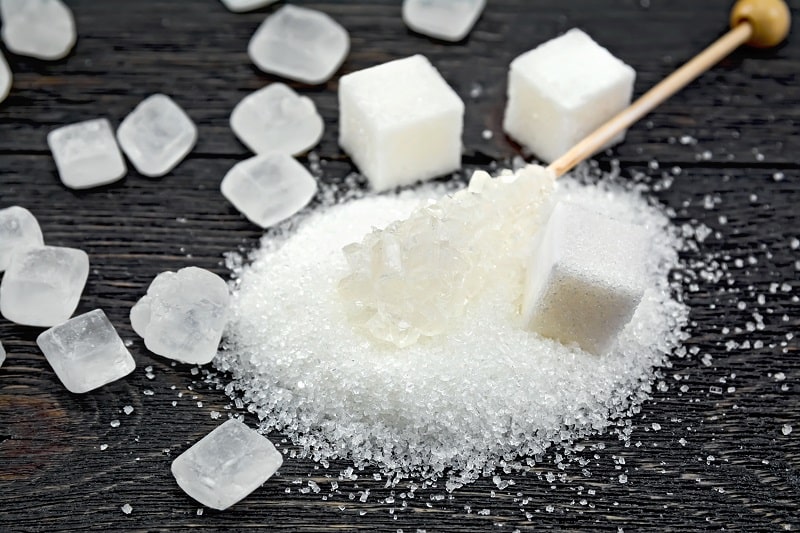Saccharin is an artificial sweetener that is significantly sweeter than sucrose (table sugar) but has no calories. It is often used as a sugar substitute in various food and beverage products, particularly in foods marketed as “diet” or “sugar-free.”
Historical Context
Saccharin was discovered in 1879 by Constantine Fahlberg, a chemist researching coal tar derivatives. It became widely popular during sugar shortages in the early 20th century and gained popularity as a sugar substitute.
Production and Sourcing
Saccharin is synthesized through chemical processes, starting from toluene or o-toluenesulfonamide. It is produced in various forms, including sodium saccharin and calcium saccharin.
Applications
Saccharin is primarily used as a sugar substitute in a wide range of food and beverage products, including soft drinks, tabletop sweeteners, jams, and low-calorie and sugar-free foods.
Regulatory Framework
Saccharin has faced regulatory scrutiny and controversy over the years. In the United States, it was once banned due to health concerns but was later delisted as a potential carcinogen and deemed safe for consumption.
Consumer Concerns
Consumer concerns about saccharin mainly revolve around its safety. Although regulatory agencies have deemed it safe when consumed within established acceptable daily intake levels, some individuals may prefer natural sweeteners or avoid saccharin due to taste preferences.
Health and Safety
Numerous scientific studies and regulatory evaluations have been conducted to assess the safety of saccharin. Current evidence suggests that it can be safely consumed within established guidelines, but individuals with specific sensitivities or allergies may need to avoid it.
Applicable Products
Saccharin can be found in various food and beverage products labeled as “sugar-free” or “diet,” including diet sodas, sugar-free candies, and tabletop sweeteners.
Alternatives
Other artificial sweeteners like aspartame, sucralose, and steviol glycosides (derived from the stevia plant) serve as alternatives to saccharin. Natural sweeteners such as honey, maple syrup, and agave nectar are also commonly used.
Scientific Research
Scientific research on saccharin has explored its safety, potential health effects, and its role in calorie reduction. Researchers continue to study artificial sweeteners to better understand their impact on health.
Case Studies
Case studies related to saccharin often focus on its regulatory history, controversies, and its role in calorie reduction strategies for individuals managing their weight or sugar intake.
Future Trends
Future trends in sweeteners may involve the development of novel artificial sweeteners with improved taste profiles and an increased focus on natural, plant-based sweeteners like steviol glycosides.
Opinions
Opinions on saccharin vary, with some individuals appreciating its role as a low-calorie sweetener, while others may prefer natural sweeteners or avoid artificial sweeteners altogether.
Warnings
Warnings associated with saccharin typically involve following recommended intake levels and considering individual dietary preferences and sensitivities.
Synonyms
Synonyms for “saccharin” include “saccharine” and “artificial sweetener.”
Conclusion
Saccharin is an artificial sweetener that provides a calorie-free alternative to sugar. While it has faced regulatory scrutiny and health concerns in the past, it is currently considered safe for consumption within established guidelines. Saccharin plays a crucial role in providing low-calorie and sugar-free options for individuals seeking to reduce their sugar intake or manage their calorie consumption. As research continues to explore sweeteners’ effects on health and taste preferences evolve, saccharin remains a prominent choice in the realm of sugar substitutes.







